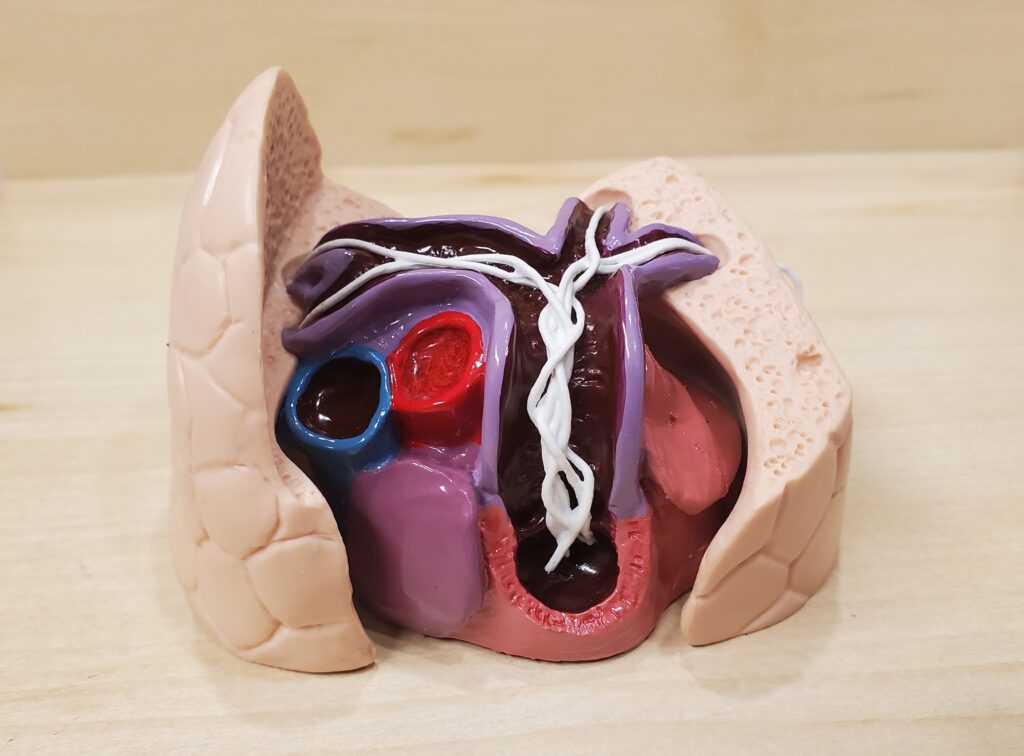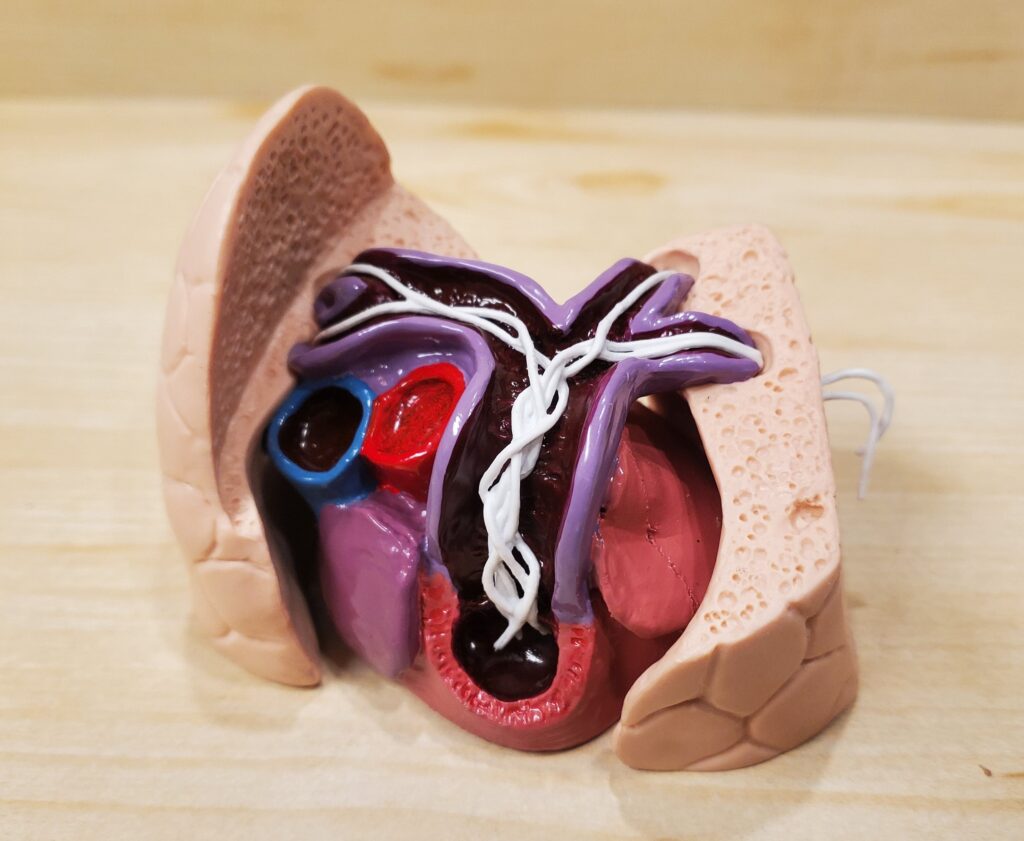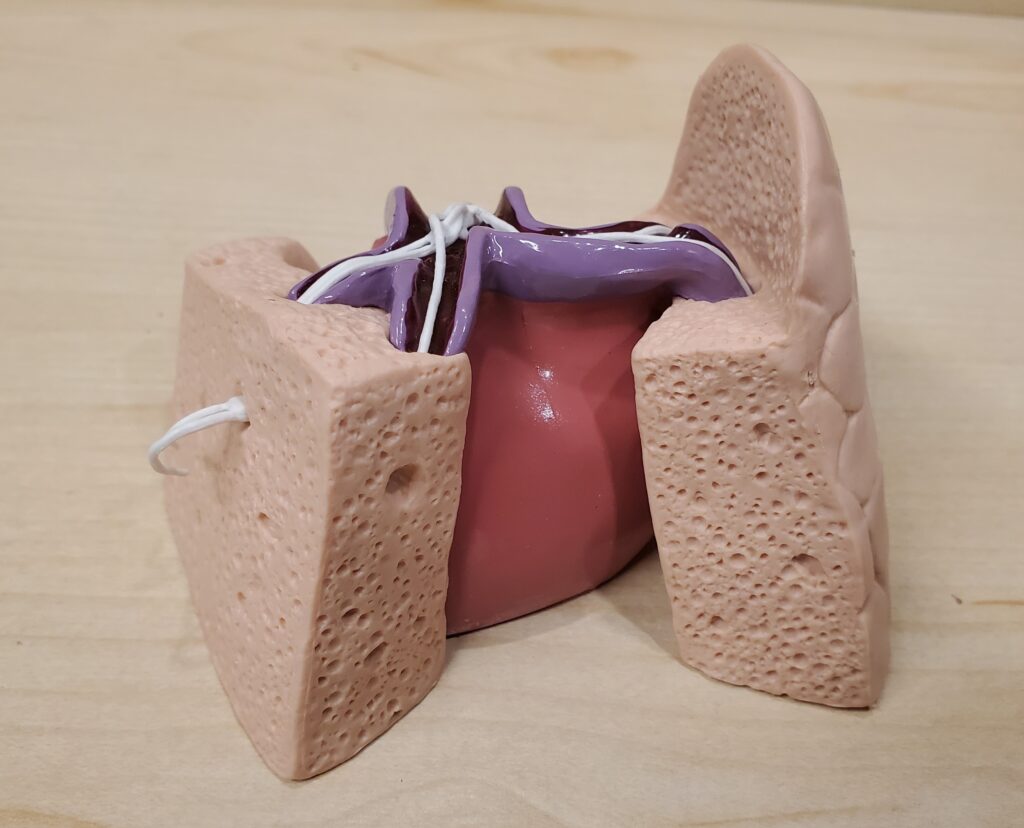Happy Valentine’s Day everybody!
All major holidays have various symbols associated with them, such as a Christmas tree for Christmas, a turkey or cornucopia for Thanksgiving, a four-leaf clover for St. Patrick’s Day, or a jack-o-lantern for Halloween. There is no doubt that the heart has become the most popular symbol associated with Valentine’s Day, and what better way to celebrate such as association on the Animal Toy Blog with an animal that lives in the heart (or at the very least, the pulmonary vessels) of its host! I am talking about the dog heartworm, Dirofilaria immitis.

Dirofilaria immitis is a parasitic nematode of canids and other carnivorans. Like all filarial nematodes, it cycles between a vertebrate definitive host (wild and domestic canids and felids, mustelids, bears, pinnipeds) and a vector/intermediate host (mosquitoes). The species is believed to be native to the southeastern United States, and has spread nearly worldwide in domestic and feral dogs. The definitive host becomes infected after the mosquito vector injects a third-stage (L3, or filariform) larva when taking a blood meal. Larvae molt once to become L4 larvae and infect muscles and blood vessels. The L4 larvae then molt once more to become adult worms that infest the pulmonary artery and right portion of the heart. Adult worms mate and the females release early L1 larvae (microfilariae) that circulate in the blood. Microfilariae are picked up by a mosquito vector and eventually become infective L3 larvae, completing the life cycle. Humans can also become infected with D. immitis from the bite of an infected mosquito, but the worm cannot develop to adulthood in the human host and it usually dies in small-caliber vessels, resulting in pulmonary infarcts. These infarts show up on radiographs as ‘coin lesions’.


Today’s review is of a model of D. immitis within the heart of its canine host. It was produced by GPI Anatomicals, who specializes in medical and veterinary models to be used as educational tools in those respective fields. The actual model in today’s display is stamped ‘2003’ but the accompanying placard states ‘2007’, making me think mine is the 2007 release of a model that originally came out in 2003.

The model shows bisected lungs, the upper portion of the heart, and bisected pulmonary arteries containing numerous adult heartworms. The entire model is 9.5 cm across its widest points basally. I don’t have a lot of reference material on dog hearts and lungs, and their size undoubtedly varies across breeds, but based on adult Dirofilaria of other species I have personally seen in human clinical specimens, the worms appear to be 1:1 in scale.

The bottom of the figure has a hole that allows it to attach to the white base that measures 12 x 16 cm. An acrylic holder displays a placard behind the model that diagrams the anatomy of the model and its worms.

This model is obviously a specialty item that I wouldn’t expect most members of our forums and blogs to collect. I mainly got it because of my professional and personal interest in Parasitology. As as added bonus, here is a pic of a dead and degrading sub-adult D. immitis in lung tissue of a human patient. This pic was taken for a chapter I wrote for a textbook on histopathology of infectious diseases, co-authored with my good friend and fellow parasitologist, Dr. Bobbi Pritt. The inset shows a close-up of a cross-section of one of the worms:

Visit the GPI Anatomicals website to view this, and their other models, here: https://gpianatomicals.com/category/all-models/
Disclaimer: links to Ebay and Amazon on the AnimalToyBlog are affiliate links, so we make a small commission if you use them. Thanks for supporting us!



